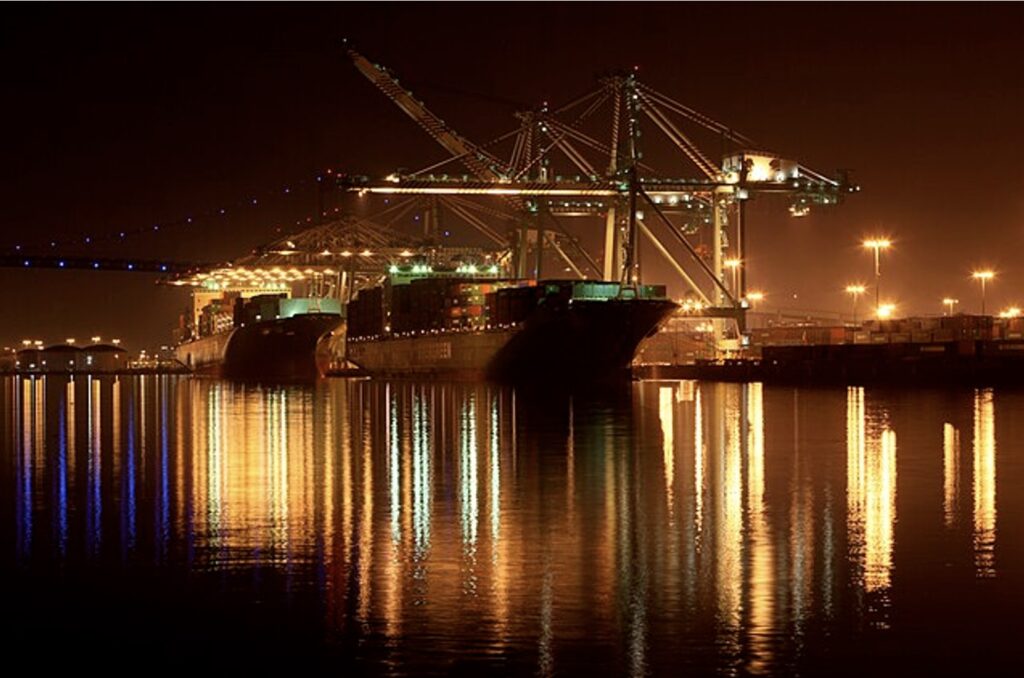There are multiple impacts of the PCIP project on the local area. Coos Bay residents are beginning to ask questions about many aspects of the project.
The Port has hired a consultant firm, JLA Public Involvement, to lead the public outreach engagement for the PCIP project. The plan for this work is outlined here.
The Port of Coos Bay’s PCIP Project Development Team currently consists of:
Melissa Cribbins – Executive Director of the PCIP project mcribbins@portofcoosbay.com
Keith Levitt, a former Port of Portland employee performs consulting services for the PCIP project through his company Confluence Strategies https://www.confluencestrategies.net/.
Matt Friesen – External Affairs for the Port of Coos Bay mfriesen@portofcoosbay.com
Community Relations for NorthPoint Development – the Port of Coos Bay’s PCIP private partner
Caddie McKeown chmcoos@gmail.com
The Job Numbers
Project proponents focus on the major rationale for the development of a container terminal in Coos Bay is to provide jobs. with estimates ranging from 2,500 to 9,000. The Port’s web site estimates are for 2,600 construction jobs over a five-year period. Additionally they suggest there would be 2,500 direct and 6,900 indirect jobs in Coos, Douglas and Lane Counties once the facility is constructed but with no information as to what these jobs would entail.
The Empire District
Empire is the district of Coos Bay directly across from the proposed terminal location. Empire residents have raised important concerns about potential noise and air pollution, risks to local wildlife habitats, strain on existing infrastructure, impact on property values, public health, and the character of nearby neighborhoods.
More Info: https://south-empire.com/empire-concerns/
The Confederated Tribes of the Coos, Lower Umpqua and Siuslaw Indians
Since time immemorial members of the Confederated Tribes of the Coos, Lower Umpqua and Siuslaw Indians have lived and stewarded lands along the shores of Coos Bay. Before modern roads, people used the beaches for travel and canoes to carry them across waterways. The Hollering Place on North Spit, across from current day Empire and next to the proposed terminal, served as one such site as it is the narrowest part of the bay.
Confederated Tribes of Coos, Lower Umpqua and Siuslaw Indians
Noise, Air and Light pollution
Container terminals are noisy places. This noise is a mix of continuous and intermittent sounds, with a constant background hum from machinery and sharp impact sounds from metal-on-metal contact. In the case of the PCIP there would be additional noise as containers are loaded onto trains and trains are built to haul containers to Eugene. This noise poses significant risks to the health of both nearby residents and port workers, leading to issues such as disturbed sleep, elevated stress, and potential heart problems.
Few of the 13,000 TEU container ships proposed to call at Coos Bay would be equipped to cold iron, that is to plug into electrical shoreside power while in port. Instead they would run auxiliary diesel generators to power cargo handling equipment and other ship’s services using heavy fuel oil. This fuel has high particulate matter. California ports require container ships to use cold ironing or other approved methods, such as an emission capture and control systems to reduce this air pollution.
As the container ships proposed for the PCIP will only be able to safely enter or leave Coos Bay at high tides they would come and go at all times of the day and night. Bright lighting would be needed for terminal operations.

Impacts to Recreational use of Coos Bay
Dredging to increase the depth and width of the navigational channel would have large consequences for the estuarine ecosystem. Estuary bottom habitats that are currently sand and support clams and crabs would be converted to rock which would no longer support these animals.
Eelgrass beds that nurture juvenile fish and crabs, and are an important substrate for herring spawn, would disappear in the terminal area and as the side slopes of the channel slump into the channel after it is dredged. The enlarged channel would change how salt and freshwater mix in the estuary. The wider, deeper channel would propagate salt water from the ocean over 1 mile further into Coos Bay on each incoming tide. The changes in salinity and water movement will influence the abundance and distribution of recreationally important species such as clams, fish and crabs.
Dredging thirty million cubic yards of material from the estuary bottom will increase the total volume of water in the estuary. It will take more time for the river and tides to fully flush water and contaminants through the bay. This has implications for oyster producers and shellfish harvesters. Recreational travel down the bay side of North Spit would be impacted by the presence of the container terminal.